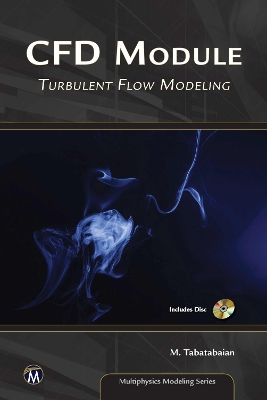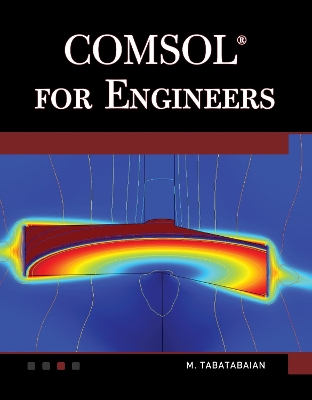Multiphysics Modeling
2 total works
This book can be used as a reference for the topic of turbulence modeling, especially in an engineering modeling and simulation course or as a tool for professionals on practical applications. Turbulent flow modeling has many applications in industry. The relevant numerical methods have advanced to the level that could be used by industry professionals to model many natural turbulent flows with acceptable accuracy. In this book we cover the fundamentals of turbulence, modeling techniques, and algorithms (including RANS) available in COMSOL (R) as well as providing several modeling examples and instructions for building these models. The companion DVD includes models and figures discussed in the book.
eBook Customers: Companion files are available for downloading with order number/proof of purchase by writing to the publisher at info@merclearning.com.
Features:
eBook Customers: Companion files are available for downloading with order number/proof of purchase by writing to the publisher at info@merclearning.com.
Features:
- Includes companion DVD with models and figures discussed in the book
- Explains the physics and principles of turbulence and provides modeling examples using COMSOL
COMSOL Multiphysics software is one of the most valuable software modeling tools for engineers and scientists. This book is designed for engineers from the fields of mechanical, electrical, and civil disciplines, and introduces multiphysics modeling techniques and examples accompanied by practical applications using COMSOL 4.x. The book includes a companion CD-ROM with files of over 25 models, images, and code. The main objective is to introduce readers to use COMSOL as an engineering tool for modeling by solving examples that could become a guide for modeling similar or more complicated problems. The objective is to provide a collection of examples and modeling guidelines through which readers can build their own models. Readers are assumed to be familiar with the principles of numerical modeling and the finite element method (FEM). The book takes a flexible-level approach for presenting the materials along with using practical examples. The mathematical fundamentals, engineering principles, and design criteria are presented as integral parts of examples. At the end of each chapter are references that contain more in-depth physics, technical information, and data; these are referred to throughout the book and used in the examples. COMSOL for Engineers could be used to complement another text that provides background training in engineering computations and methods. Examples provided in this book should be considered as ""lessons"" for which background physics could be explained in more detail.
Features:
eBook Customers:Companion files are available for downloading with order number/proof of purchase by writing to the publisher at info@merclearning.com.
Features:
- Includes a companion CD-ROM with files of over 25 models, images, code
- Uses progressive approach in terms of examples and models
eBook Customers:Companion files are available for downloading with order number/proof of purchase by writing to the publisher at info@merclearning.com.

